Published on
Northeastern co-op to NASA’s
Hall of Honor
Joseph S. Heyman’s four-decade leadership career at NASA spanned the Apollo 11 moon landing, the Space Shuttle Challenger and other major events. His recent induction into Langley’s Hall of Honor can be traced back to his Northeastern University co-ops. Here is his inspiring story.
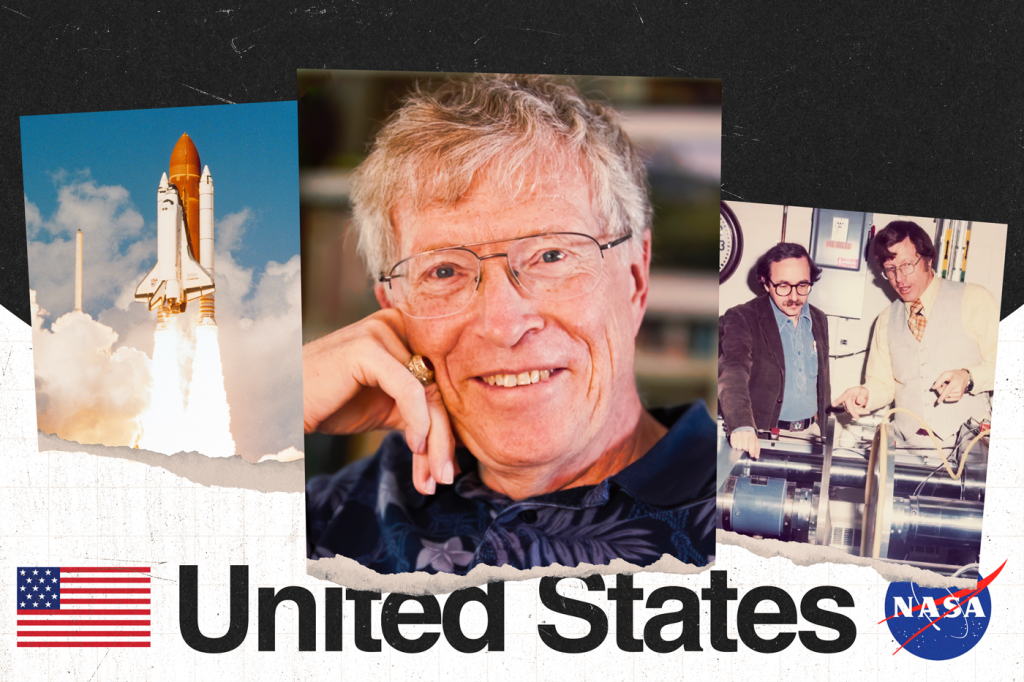
Joseph S. Heyman’s association with NASA began as a Northeastern student in 1964, two years after President John F. Kennedy committed the U.S. to landing a man on the moon.
Heyman, a Northeastern graduate, was at NASA for the grand successes and tragic failures over his four-decade career, which he traces back to his Northeastern co-ops.
“I really look at Northeastern as a turning point in my life,” says Heyman.
Heyman was inducted last summer into NASA Langley’s Hall of Honor.
He joined the select group of 54 people honored by the space agency at the Langley Research Center, where Heyman earned 34 patents while developing new ways to test spacecraft and aircraft materials.
The son of an inventor in New Bedford, Massachusetts, Heyman tells an inspiring story. He dropped out of college before enrolling at Northeastern at the suggestion of his father.
Here, Heyman lays out, in his own words,
his 10-step journey to NASA’s greatest honor.
1. His father, Sam, taught Heyman to think like an inventor and entrepreneur.
“He never threw anything out. Our basement was lined with sauerkraut bottles filled with capacitors, resistors, screws, washers, nuts, bolts, everything you could think of. He had a room in the basement for woodwork, a room for metalwork, a room for electronics and—believe it or not—a room for blowing glass. So I grew up doing things that a normal kid never ever got to see.
After the Second World War, my dad started a company to convert wartime machinery into peacetime use. To his shock, a buyer evaporated and he was stuck with this enormous quantity of aluminum tubes that he had purchased from the government. Being an inventor he said, ‘Let’s build some machinery to make folding aluminum furniture.’ He actually has a patent on the folding aluminum chair. At one point he had one of the largest aluminum companies in the U.S. for furniture.”
2. Heyman dropped out of Cornell, took a year off from school to work with a photographer, and then was introduced to Northeastern by his father.
“I thought I would go into astronomy or some field like that, so I bypassed some typical first classes my freshman year at Cornell University. They gave me advanced placement in physics. And I was too young. I was not ready.
I was distraught over the politics of the time. I didn’t like the idea that everything in engineering and science seemed to be used toward war. I just didn’t want anything to do with it.
So I took a year off. I worked for a photographer—an amazing guy, I learned a lot from him—and after a year my dad said, ‘Do you want to continue on this way? Or do you want to go back to school?’
I wanted to go back to physics.
And he said, ‘Fabulous.’ Then he said, ‘But instead of going back to Cornell, I have a suggestion for you. It’s a school you might not have heard of. It’s called Northeastern.’
I think he saw the value in apprenticeship and that the traditional mechanism of higher education did not give you the hands-on experience that I needed. He was a hands-on guy and he saw that the co-op program fit my mind and my interests. And he was right.
Going to Northeastern let me get my head screwed on right again. I jumped back into physics and had the most amazing—I don’t even want to call it a career. It was a passion. And it was Northeastern that gave me that.”
3. In the wake of JFK’s commitment to put a man on the moon by the end of the decade, Heyman joined NASA in 1964 as a co-op.
“I did well at Northeastern and got my first pick of co-op jobs, which was NASA. I loved Boston, I wanted to stay in Boston, but the new Electronics Research Center in Cambridge wasn’t ready to take co-ops. The co-op manager suggested I go to Langley because it was a research center. I said, ‘As long as it’s only one semester.’

Almost 40 years later I retired from there.
These were hardworking, bright, energetic people at NASA. I was a sophomore during my first co-op and one of the engineers asked if I would like to see the computers. I said, ‘Oh my goodness, I’ve heard of those. Yes, I’d love to see computers.’ The noise was phenomenal from all of these electromechanical calculators clicking away like typewriters.
There were 20 to 25 women in the computer room. The women were mathematicians. They were doing the computations for the agency. This is what the movie “Hidden Figures” was about. I met those women.
NASA was a we-can-do-it organization—even if we didn’t know how we were going to do it.
4. Heyman’s initial NASA co-ops were focused on collecting and analyzing data from hypersonic wind tunnels. In his third co-op at the agency, he found his niche.
“I was exploring the damage done by radiation to space satellites. So now I was getting into materials. We were irradiating these satellites with electron-beam radiation, dovetailing the [1958] discovery of the Van Allen radiation belts, and it was very timely and very exciting work.
Here I am a student and I’m building a solar wind simulator for accelerating heavy ions to bombard materials because I needed to see how they would damage those materials. It was a 40 kilovolts low-energy ion accelerator—a plasma system—and I had full control of it. And that led to my being hired by NASA full-time.”
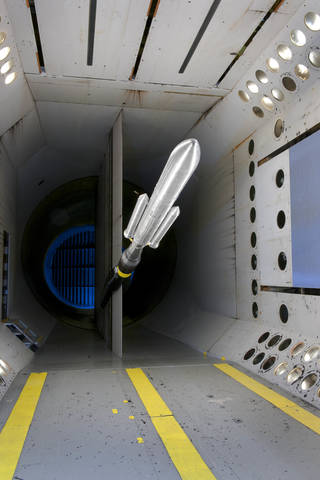
5. A 1973 explosion at a NASA wind tunnel changed everything. Heyman wound up inventing a new field that would earn him his place in the NASA LaRC Hall of Honor.
“It was one of the larger wind tunnels and it blew up at night—many tons worth of steel blown hundreds of feet into the sky, the entire area covered in incendiary ceramic pebbles at white-hot temperatures. It was a horrific, horrific accident. Because I was a young Ph.D. and I was respected, I was asked to fly out to California and sit on the accident review committee. We discovered the cause of the accident was something as simple as an improperly tensioned bolt—an enormous multi-million dollar failure just because a bolt was improperly tensioned.
That led to me inventing the ultrasonic bolt tensioning device. And it took me about five years of re-inventing it, each time a little better, to get it to the point where it was practical and useful.
That accident also redirected me from doing research in semiconductors to starting a new field for NASA called the science of nondestructive evaluation (NDE). At first it was just Joe Heyman and one technician, F.D. Stone. I grew that little teeny lab to about 100 people. We were the largest laboratory of its kind in the United States.
Typically in engineering, when you wanted to see how strong a metal beam is, you would apply force to that beam until you see when the beam fails. Basically you load it till it breaks. As a physicist I didn’t like that. I wanted to find out why things fail. Are there precursors that can tell you that something is failing? And can you in a nondestructive way assess the health of a material?
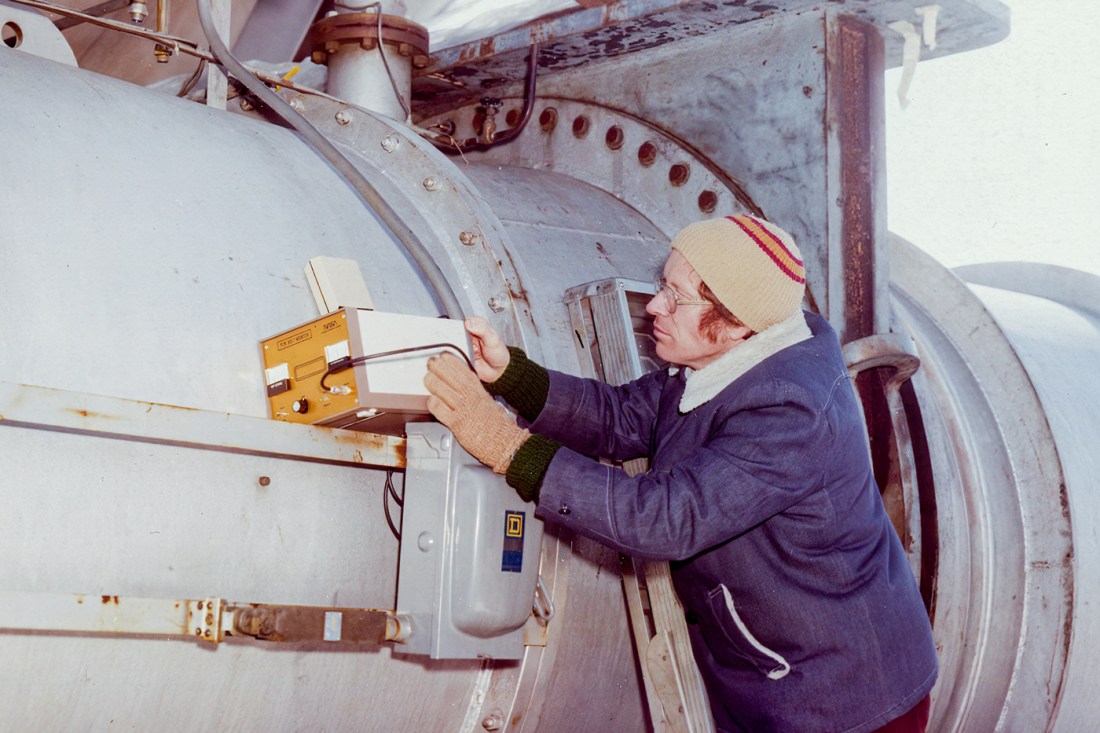
You can’t shake and break the spacecraft that you’re going to be launching. So I wanted to have the science of measurement tied to the prediction of mission success. I was looking at how can we do physics measurements—not engineering measurements—to assess the health of materials.
So it literally was the birth of a new field for the agency. And I just had the unbelievable luxury of attracting some of the brightest people to NASA from all over the world.
We were doing physics to help prevent NASA’s missions from failing—or if they did fail, we would have the science to better understand how the failures occurred. In addition to ultrasound, we also did thermography, we did radiography, we did shearography. We did eddy current, we did electron beam acoustics. We were doing work that had never been done before in any field. It wasn’t a career, it was a passion—and I got to work with some of the brightest people that I’ve ever had the pleasure of working with. It was a hoot. “
6. In 1984 he identified aging aircraft as a danger to U.S. aviation.
“NASA is the National Aeronautics and Space Administration. Aeronautics—airplanes—are a critical part of NASA. I saw that as the fleet aged, the country needed better tools for assessing the degradation of aircraft. But I could not sell that program to NASA headquarters.
I submitted a proposal and my funding manager said, ‘Fabulous. What a great concept. Submit it again next year.’ I did. ‘Joe, be patient with us.’ I submitted it for the third year. ‘They don’t like old aircraft, Joe, they want tomorrow’s aircraft—they don’t want the agency to be tied in with old stuff.’ I submitted it again though and it didn’t get funded.
So I submitted it for a fifth year—and do you know what happened in year five?
Have you heard of the Aloha aircraft accident?
In 1988 a Hawaiian airline flying between islands—a very high-time-use aircraft—zipped open. The fuselage ripped open. A flight attendant was sucked out. Somehow the pilot landed that plane with half the upper fuselage missing. The only thing keeping that plane together was the wiring harness under the floor and some remaining structural elements. If that pilot had tried any fast maneuver, he would have broken that plane in two.
Well, all of a sudden NASA headquarters is saying, ‘What happened? Why aren’t we on top of this problem?’ And all of a sudden I was managing with my colleagues an enormous eight-year program on aging aircraft.
NDE (nondestructive evaluation) was now on a peer level with materials and a peer level with structures. Never in NASA’s history was NDE on a science-engineering peer level with those other disciplines. It was that work that elevated it.
The Space Shuttle Challenger broke apart less than 2 minutes into its flight on Jan. 28, 1986, killing all seven crew members aboard.”
7. When Space Shuttle Challenger exploded 73 seconds into its 1986 mission, killing all seven crew members aboard, Heyman helped research the cause and developed new systems that enabled the shuttle program to return safely to flight two years later.
“The accident was wrenching. There were tears. There was shame. Everybody was depressed, everybody was horrified.
We dedicated nearly the entire NDE laboratory to focusing on the cause of this incident and how we can make the system safer.
It turned out that an insulating material that is basically like a putty envelops all of these flanges [on the liftoff rocket]. When the motor fires and is pressurized by the burning fuel, that putty becomes viscous. It flows and quickly prevents gas leaks.
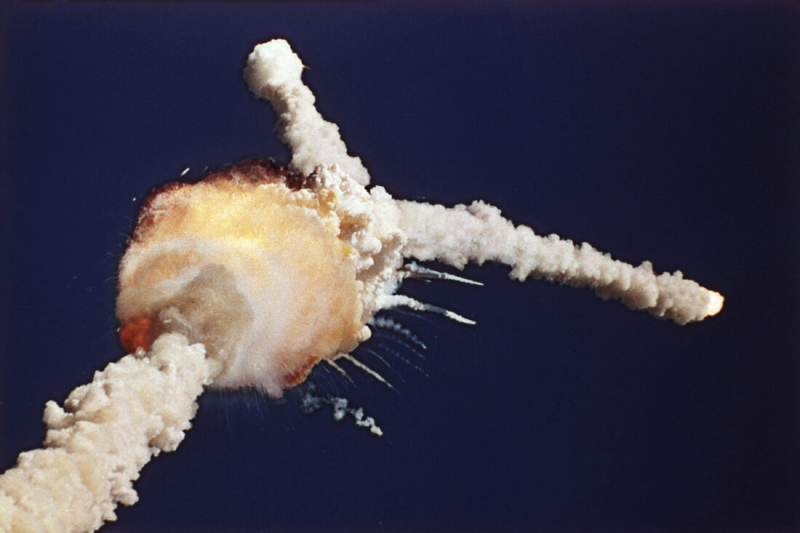
One problem on that day was that they were launching at a cool temperature that prevented the putty from flowing. So hot gas found those paths that should have been protected by the putty and the hot gas cut through the metal.
But this specific problem had nothing to do with the shuttle’s design. It had everything to do with a management override of an engineer’s reluctance to allow launch. The engineer who understood this stuff said, ‘It is too cold to launch.’ It was management that said, ‘We’ve had something like 15 launches with basically the same conditions. We’ll go ahead again.’
Our lab tested elements of the structure and assembly finding no issues of the design.
It was terribly exciting to feel that we were in a position to help get the shuttle returned to flight. We dramatically improved the ability to characterize the integrity of the joints, the placement and thicknesses of the putties, the tensioning of fasteners, the thickness of insulation, the bonding quality of the tiles on the shuttle itself. We investigated everything associated with flight and the tools that we developed dramatically improved the safety and integrity of the shuttle.
One of the awards that I’m so endeared of is called the ‘Silver Snoopy.’ Charles Schultz (creator of the comic strip ‘Peanuts’) was a NASA advocate who loved space, and he allowed NASA to create a special award, a little silver pin that looks like the dog Snoopy. It is awarded to those scientists and engineers who have dramatically improved the ability to fly, and I was a recipient because of the work on the return to flight for the shuttle. So I wear that on the lapel of my sport jacket to this day.”
8. His passion was fed by a variety of inspiring experiences.
“This story has almost nothing to do with my work, but it was one of the most exciting things that ever happened to me at NASA. Because I did a little tiny bit of work on the Viking, which was the first soft lander on Mars in 1976, they invited me to the landing party. It was like being in a control room. It’s dark. There are computer screens all over the place. Everybody is watching something and everybody’s nervous as all get out.

This is back when the data rates were maybe 300 baud or something like that.
We’re looking at Viking’s data and everyone is saying, ‘It’s coming in too fast.’ And of course the data we’re seeing is 20 minutes late, because that’s how far Mars is from the earth. So whatever we see happening has already happened. It’s either crashed or it has landed successfully, and we don’t know.
We can see the spacecraft correcting itself. It is doing exactly what it’s supposed to do. It’s wavering in between the perfect line—a little fast, a little slow, a little fast, a little slow. Suddenly all the data stops. We’re waiting. Nothing. All the screens are blank. The room is absolutely silent. It’s black in there because there’s no light other than the projection screens.
On the biggest screen across the top comes this little flying white dot. It was writing the first image of the first spacecraft lander on another planet from the earth and I was watching the image appear in real time. That was a thrill.
Another memory that stays with me is of standing under the solid rocket motors of the shuttle launch system. It’s a tower and you’re standing under this 185-foot solid rocket motor 12 feet in diameter. And you’re looking up at that motor—it’s 3.5 million pounds of thrust—saying, ‘God, I hope the thing doesn’t go off now.’
When the Apollo 11 moon landing occurred in 1969, I was a graduate student—on NASA pay—watching in St. Louis on a little black-and-white TV with my wife, Berna. I was a youngster recently married, and though I had done a tiny little bit of work on some of the insulation panels that were part of the Apollo system, I was not actively engaged in Apollo research until later on. It was just so exciting—we were on pins and needles and couldn’t believe that we were watching it and it was real. So it was a spectacular feeling, being a NASA scientist and being able to observe this phenomenon of the first humans landing on the moon.
It is mind-boggling to think of how the inventive, creative minds can design, test, engineer, build and produce these systems for us to get these missions done. It is just awesome. And the people are the key and the work is a grind. You pick yourself up off the floor after every failure and know that you’ve got to try it again.”
9. Heyman learned along the way that failure is necessary.
“I fear that kids who just have book learning or computer-based studies don’t have the background to be as creative as they could be. You need to take things apart. You need to break things. You need to rebuild things. You need to screw up and not be able to rebuild it because you made a mistake. You need to then start all over again and rebuild it because that’s all part of the learning process.
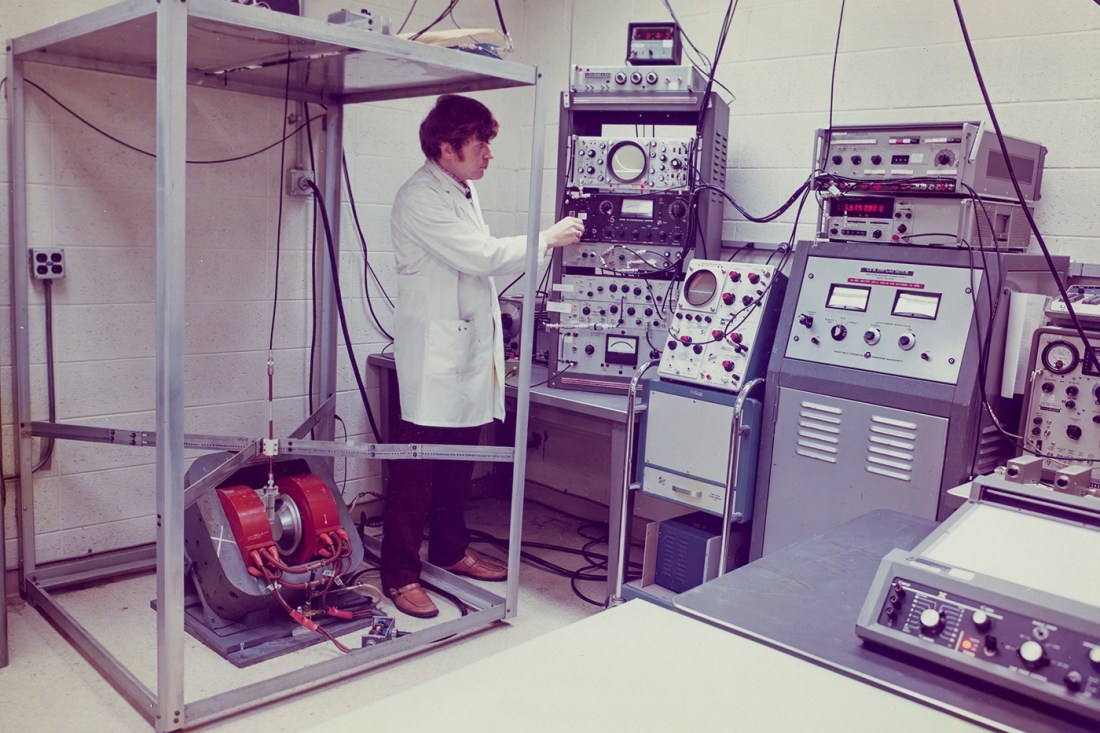
And that’s one thing that I was able to do thanks to my co-ops at NASA—to have mentors who let you give it a shot. So you report back that it didn’t work. OK, then, try something different.
The key is not to let the failure be a barrier. The failure has to help you realize, OK, what can I do differently?
I think that Northeastern is an absolute gem that gives kids that power of hands-on experience—though I like to say it’s not hands-on, it’s really mind-on.
I mean, there were times I’d wake up at 3 in the morning because I’d just figured something out and Berna would say, ‘What’s the matter?’ I would jump up and drive to work and start writing stuff down. Most of my patents were labored that way. They didn’t just suddenly get solved. They were grinds and grinds, then all of a sudden bang—and that was so exciting. So exciting.”
10. After retiring from NASA in 2001, Heyman became a professional photographer, teaching at William and Mary‘s continuing education program and contributing to two books based on the historic home in upstate New York where he summers with his wife.
“When I got word that I was going to be inducted into the NASA LaRC Hall of Honor, we were in our home in the mountains of New York that was built in 1791 by Colonel Peter Vroman of Revolutionary War fame. When he woke up in the morning in his new house, he was walking on the same floor that I’m walking on today.
We flew back to Virginia for the ceremony in July.
Langley did something very special and I was delighted that they did—they had a young engineer assigned to shadow me for everything I did that day. She shared with me what research she was doing, and all I could think of was, gee, I did stuff like that when I was a young scientist, hosting a visiting scholar, and here she is now doing it for me.
We entered this big hall and all of a sudden it became real. And I realized, my goodness, I’m going into the Hall of Honor. There were only about 50 names up on that wall. What I was just thrilled by is the people who were joining me in that induction process. Some of those were the very colleagues that I had knitted together into the career that I chose.
The colleagues that were being inducted were, to me, the heroes of the agency, and I just felt so honored to be with them. My family obviously was so excited for the ceremony. Then there was the pomp and the ceremony with the [NASA/LaRC] director and the military band and the flags and all that stuff that makes something feel special. It was an amazing day.
And having my grandson Max there was absolutely a pivotal part of it.
He’s doing high-school-level math as an 11-year-old and the school doesn’t know quite how to teach him and they know it and they love it. He won second place in the school’s spelling bee through grade eight and he’s just in the fifth grade. I like to think that he’s kind of a little bit like me when I was a kid.”
Ian Thomsen is a Northeastern Global News reporter. Email him at i.thomsen@northeastern.edu. Follow him on Twitter @IanatNU.





